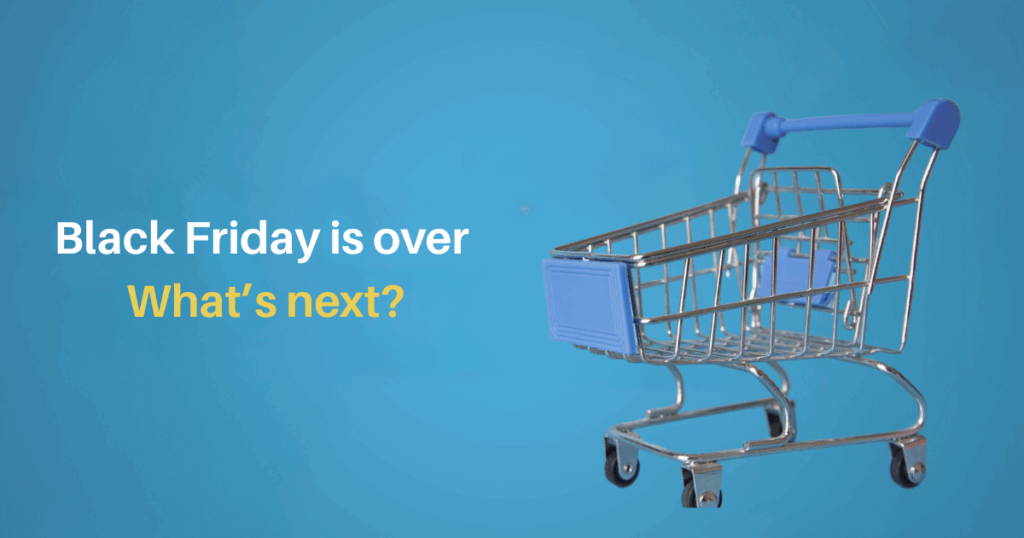Table of Contents
The post-Black Friday season offers an extended window of opportunity, from Cyber Monday to the end of December, where consumers are still actively shopping.
According to Criteo, 76% of companies limit promotions to Black Friday weekend, which means you have a real chance to stand out by continuing your campaigns through the rest of the holiday season.
What’s Driving Consumer Behavior After Black Friday?
Google’s retail insights (Think With Google) highlight that shoppers quickly shift their focus to Cyber Monday, Christmas, and New Year’s right after Black Friday. This “wrap-up phase” is when consumers hunt for final deals, gifts, and seasonal discounts.
In 2024, Cyber Monday generated a record $13.3 billion in online sales, up 7.3% from the year before (Aitechtonic). Surprisingly, mobile purchases made up 57% of all orders, as confirmed by Digital Commerce 360.
Holiday season shopping continues strong too, with global holiday e-commerce spending reaching $1.17 trillion, and Cyber Week alone accounting for 25% of that total (Qafila).
How to Seize the Post-Black Friday Period
1. Retarget Abandoned Carts and Browsers
Now is the time to retarget customers who browsed your site or abandoned carts during Black Friday. According to Accudata, 70% of retargeted users are more likely to convert.
Avoid the rising ad costs of Black Friday and Cyber Monday (CPMs nearly doubled in 2023, according to AdRoll), and instead lean on affiliates and customer data to reach those warm leads more cost-effectively.
2. Use Affiliate Marketing to Expand Your Reach
Affiliate marketing is a smart post-Black Friday tactic. 12% of affiliate marketers earn over $75,000 annually in commissions (ActiveCampaign) and can help drive 1-5% conversion rates from new audiences.
Affiliates let you promote deals without heavy upfront ad spend. They also know how to speak their audience’s language, which builds more trust and engagement.
3. Coupons Still Work And Even Better in December
The rush isn’t over. Searches for “coupons” surged by 31% during the wrap-up phase (Think with Google).
And with gift-related searches increasing by 55%, offering last-minute coupon codes tied to Christmas or New Year’s is a great way to convert browsers into buyers.
Also, 44% of shoppers actively look for ads that include coupons, especially when planning year-end gifts (AdColony).
To know more about coupons impact, check this article:
Why can Coupons be valuable for e-commerce business?
4. Partner With Influencers for Maximum Visibility
According to Sitecore, 80% of consumers say influencers inspire their seasonal shopping.
In 2024, video creators on YouTube and TikTok played a major role, with searches for “holiday gift ideas” growing by 90% in just two weeks after Black Friday (Think With Google).
Influencer partnerships that include limited-time promo codes or featured products drive both engagement and urgency.
Final Tips for Global Post-Black Friday Success
- Use Data Smartly: Analyze which products got the most attention on Black Friday and build campaigns around them.
- Go Mobile-First: With over 69% of shoppers buying on mobile (Digital Commerce 360), your mobile UX and checkout flow must be seamless.
- Focus on Convenience: Use fast shipping, easy returns, and flexible payment options like Buy Now, Pay Later (BNPL), which drove nearly $1 billion in sales during Cyber Monday 2024 (Aitechtonic).
Conclusion
Black Friday is not the end; it’s the launchpad for the rest of your holiday marketing success.
From Cyber Monday through New Year’s, consumers are still actively searching, shopping, and spending. With the right retargeting, affiliates, coupons, and influencers, you can turn December into your most profitable month yet.



